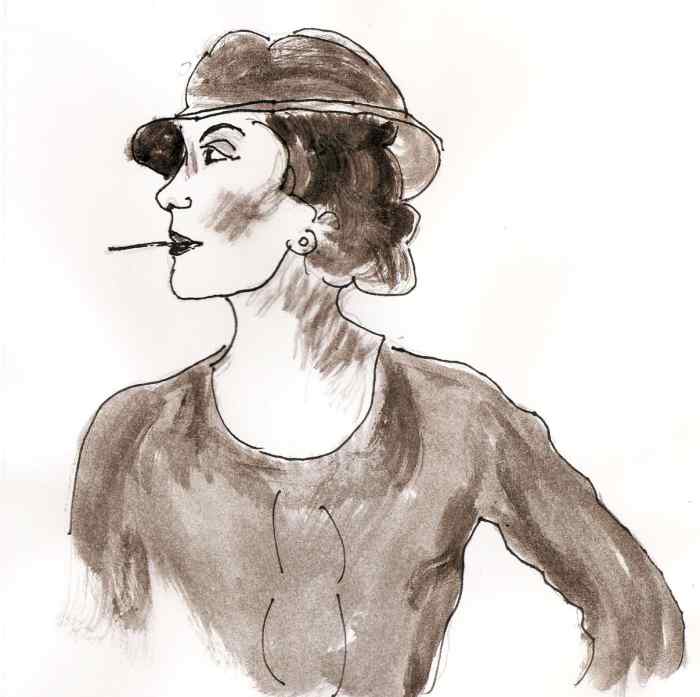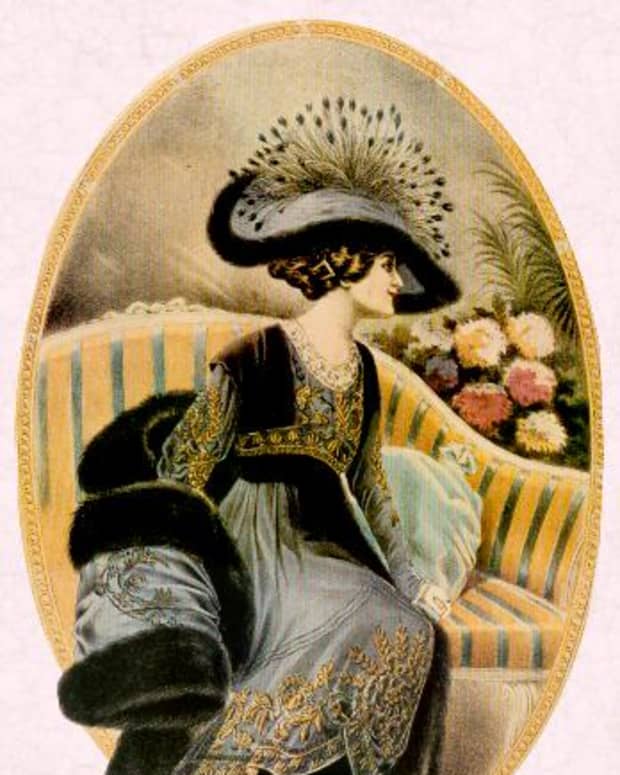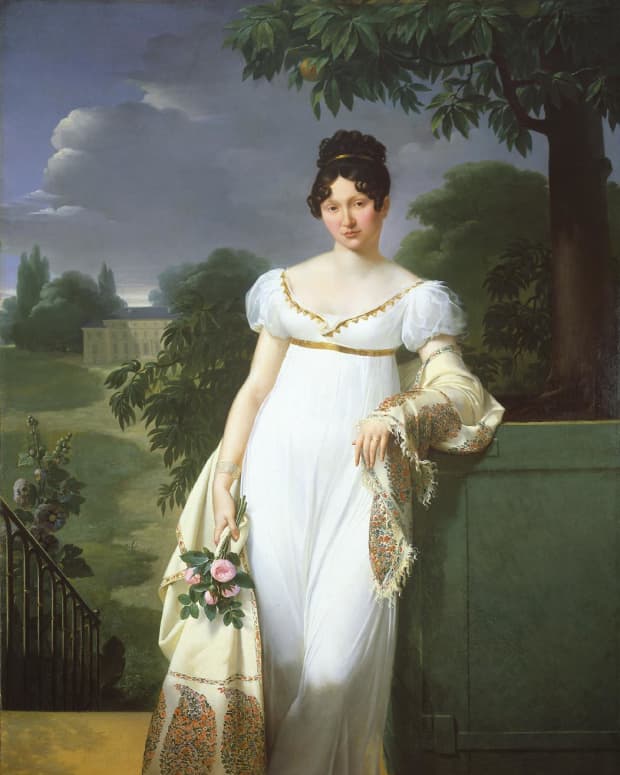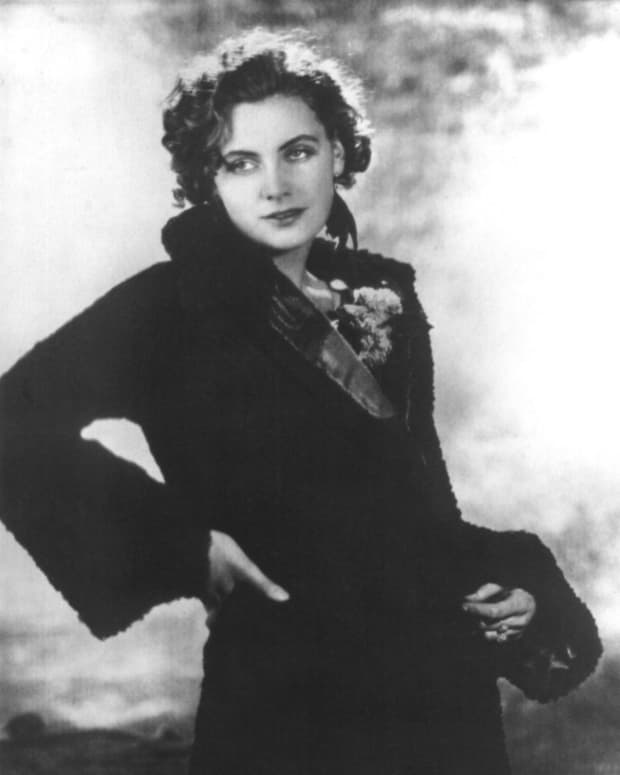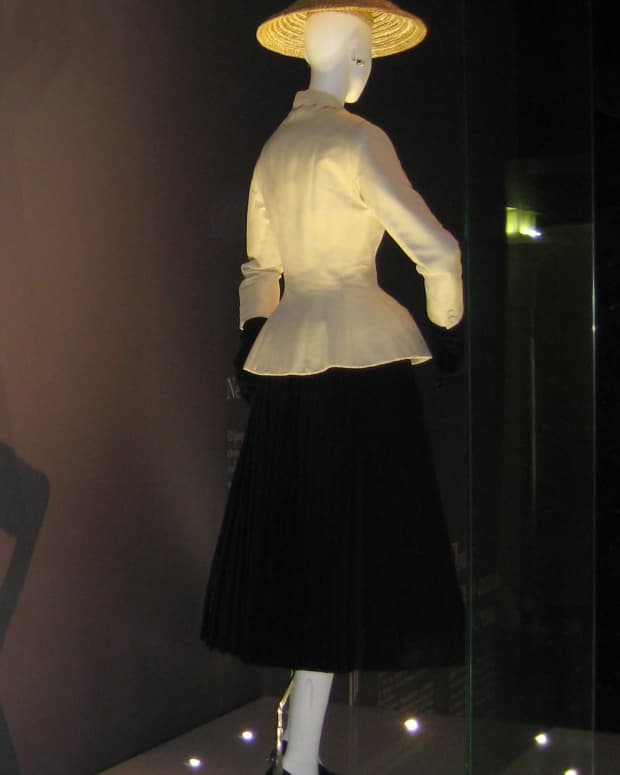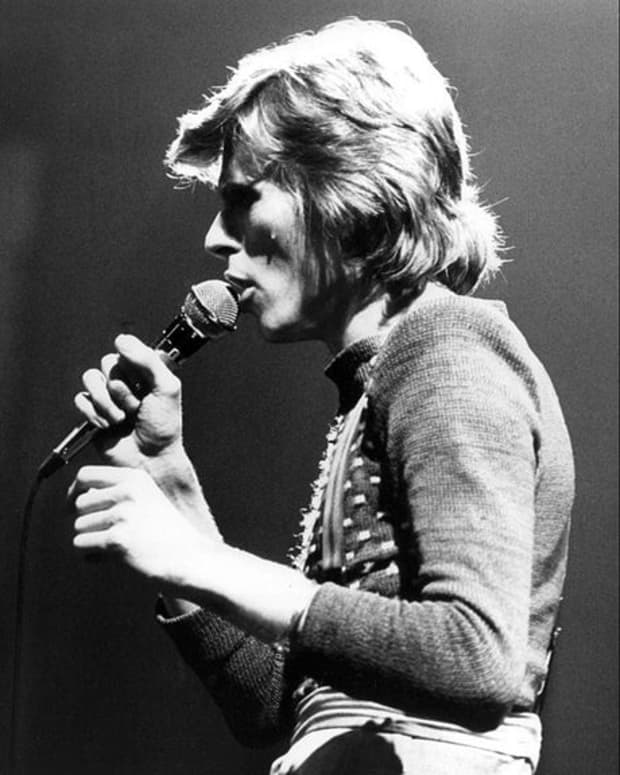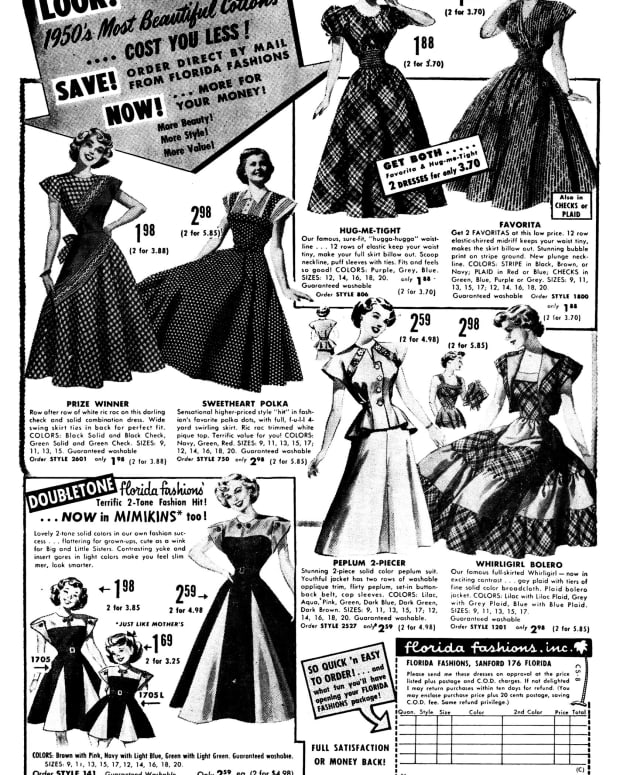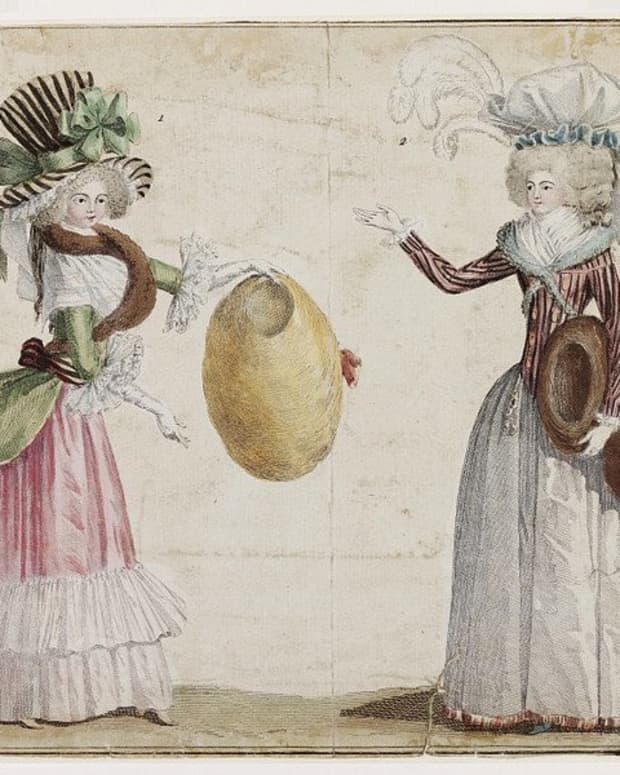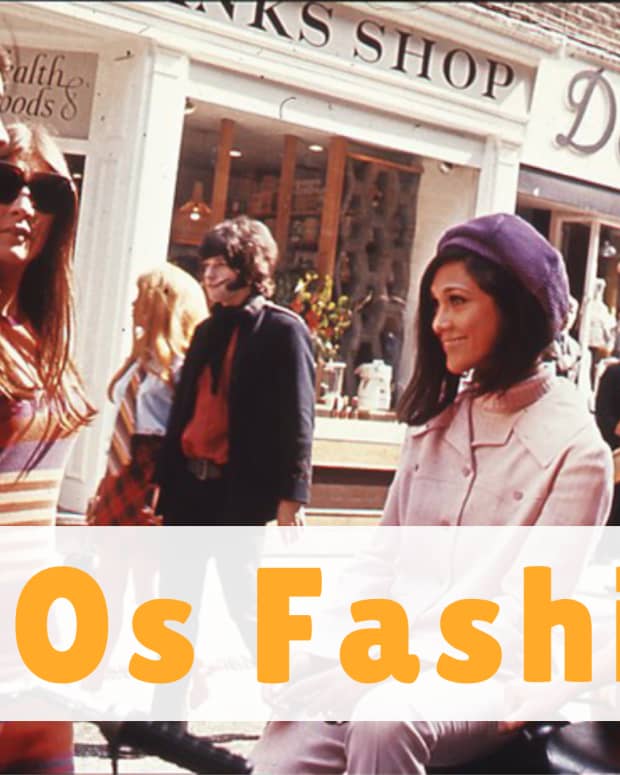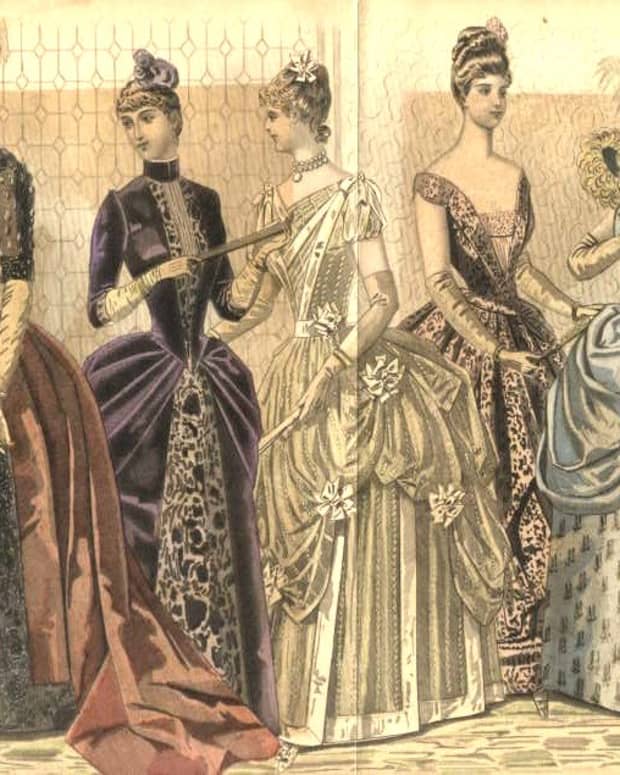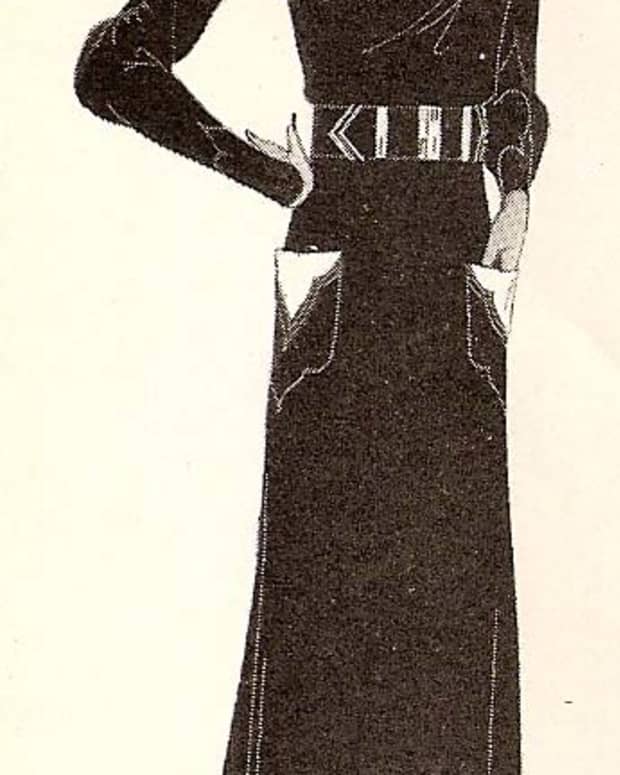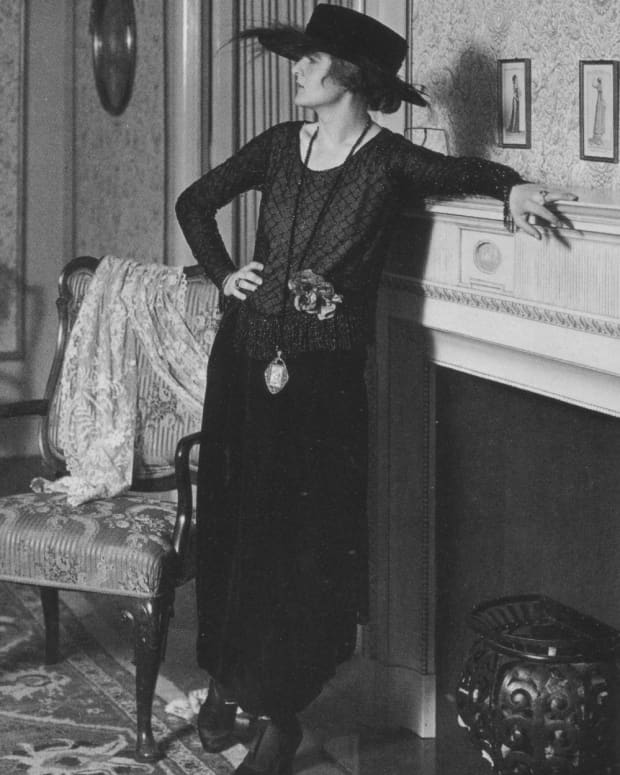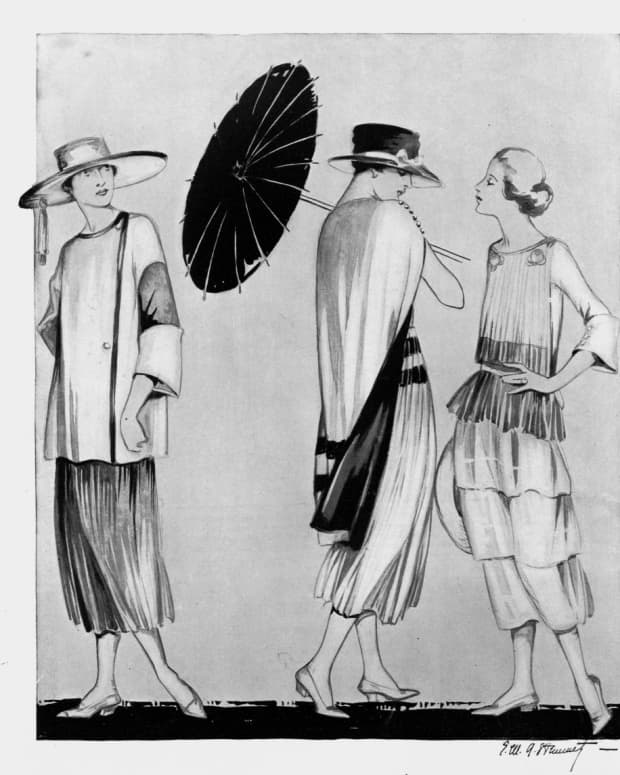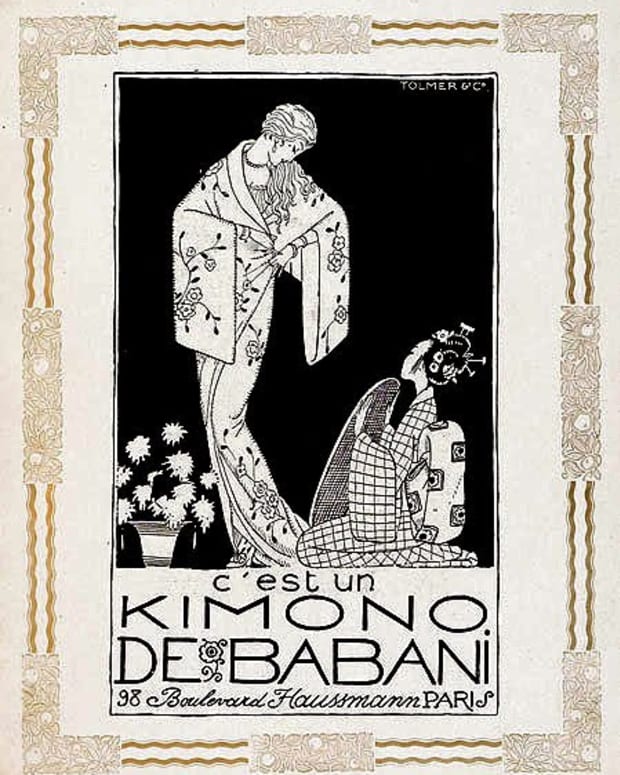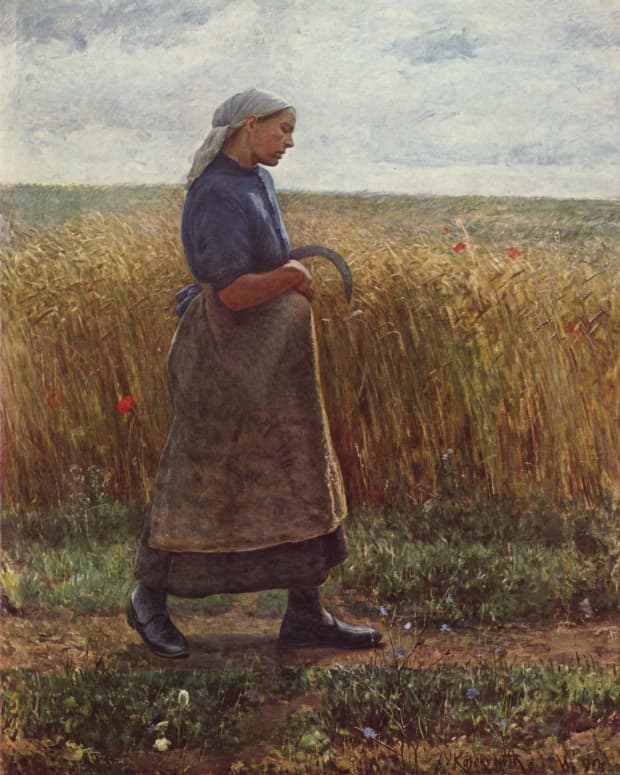Coco Chanel: The Creator of Modern Style
Dolores's interest in fashion history dates from her teenage years when vintage apparel was widely available in thrift stores.
Who Was Coco Chanel?
Gabrielle "Coco" Chanel was the mother of 20th-century fashion. She introduced the concept of comfort and ease of movement into women's clothing. Chanel gave us soft trousers, jersey, pockets, and the Little Black Dress. Her designs were, at the time, shockingly simple. Her concepts created what was to become what we think of as classic style.
Before Chanel, women were trussed up in heavy corsets and festooned in lace, ribbons, flowers, and pleats. They were encumbered by gigantic hats. Before Chanel, women's lives revolved around their clothing. One wore a certain garment at home in the morning, changed for lunch or to receive guests, changed again to go out for a walk, and changed for tea, for dinner, for the races, and for theater ad infinitum. Chanel's influence allowed for clean lines and drastically cut down on a fashionable woman's wardrobe essentials.
Background
Gabrielle Chanel was born in a charity hospital in 1883 to a young unmarried mother and an itinerant peddler. When Gabrielle's mother, Jeanne, died of complications due to chronic respiratory problems, Gabrielle and her sisters were placed in a Catholic orphanage in Aubazine, France. Her grandparents, who already had 19 children, could not afford to take their grandchildren.
Here, the young girl grew up surrounded by women who lived happily unattached to men. The sisters of Aubazine lived simply, working as teachers, nurses, and in social work. All were answerable to a female boss, the mother superior. Despite the ostentatious late Victorian sensibilities, life a the abbey offered an austerity that was to influence Gabrielle all her life. The sisters dressed in plain black and white habits, a color combination that became one of Chanel's favorites.
At 18, she went to a finishing school in Moulins, the Pensionnat Notre Dame. Here, Chanel learned to sew. Her aunt Adrienne (the youngest of her grandparent's 19 children) also attended the school. The young ladies not only resembled one another, but became very close. Gabrielle, her sisters, and Adrienne often visited Adrienne's sister, Louise, in nearby Vavennes sur Alliler. The creative Louise was fond of enhancing garments with fanciful trim made of fabric scraps, ribbon, and handkerchiefs. Aunt Louise and the girls added cuffs to plain dresses, decorated blouses, and designed hats while together on weekend visits.
Upon leaving school, Gabrielle and her Aunt Adrienne were employed as seamstresses at a business that catered to young women. In the small rented room they shared, they also took in sewing for a tailor shop frequented by military men. Young Gabrielle entered a new life. Dashing young cavalrymen introduced her to the world of theater, horse racing, and the cabaret scene. After the poverty and austerity of her childhood, the life of fun and frivolity opened her eyes. Gabrielle Chanel wanted to be a star.
Though not blessed with a singing voice, Gabrielle took to the stage. Her personality and stage presence earned her applause and a new nickname: Coco.
Hats
In 1904, Coco moved to the country home of her lover, Etienne Balsan. Heir to a textile fortune, Balsan maintained the place as a party house for the elite and the young polo crowd. While she did not fit in with high society, she found her place at the stables. She loved horses and realized that women's clothing did not work well with an equestrian lifestyle. She often wore Balsan's clothing, which she felt more suitable for her activities. Soon, Balsan's tailor helped Chanel to create jodhpurs and a riding jacket. Chanel wore trousers and rode astride while most of the women were still riding side-saddle.
Around this time, Gabrielle returned to her old hobby of designing hats. Soon, Balsan's socialite friends began to order Chanel hats, which were simpler and easier to wear than the standards of the day. The hats became so popular that she moved to Balsan's Paris apartment where she hired her sister to help decorate and sell hats for wealthy Parisian clients.
21 Rue Cambon
In 1908, Chanel met Arthur "Boy" Capel, a wealthy suitor whose lifestyle was vastly different than the society at Balsan's playboy country home. Chapel's intellectual interests included politics, spiritual themes, and the social justice movement. He saw a new kind of woman in Chanel, a strong independent woman able to manage her own affairs. He encouraged her interests and together with Balsan, financed a shop at 21 Rue Cambon in Paris' 1st arrondissement, the cultural hub of the city. In later years, the shop moved to 31 Rue Cambon.
Boy Chapel introduced Coco to Lucienne Rabate, a seamstress whose formal training and place at Chez Lewis helped transform Gabrielle's business from a millinery shop to a trendy boutique frequented by the upper crust. By 1912, Chanel offered sweaters, skirts, and dressed in addition to her popular line of hats.
In 1913 she opened a shop in the fashionable seaside town of Deauville, France. In addition to hats, the boutique offered light, comfortable clothing that would soon be known as sportswear. Socialites wore Chanel's creations to the race track, casinos, and grand hotels of the North East resort town. Her innate business sense compelled Coco to give outfits to women of the highest social rank who became walking advertisements for the easy-to-wear new styles.
The Great War
Chanel's purchase of a textile merchant's overstock of Jersey in 1914 was a shocking move toward a totally new look in women's wear. Jersey was a fabric of the lower classes and used most often in men's undergarments. Chanel used the humble material to introduce a new silhouette for women, de-emphasizing the waist and creating a smooth, slim, youthful look. Though Jersey's color was limited to gray and navy blue, Chanel soon had it dyed to add bold new colors.
The outbreak of World War I sent Parisians fleeing to places like Deauville, where business closures left Chanel Mode the only show in town. The Great War was good for Coco Chanel.
Fabric restrictions worked in favor of a designer who offered simple, pared-down modes of dress. Food shortages led to a slimmer look, as people had less to eat. And as women entered the workplace, clothes created for ease of movement were better suited than the fussy garments of the Edwardian era. Chanel designed stylish pajamas for Parisian women to wear when they fled their bedrooms for bomb shelters in the middle of the night.
By 1916, Coco Chanel had gained an international reputation and was praised for her revolutionary new styles by American Vogue.
Read More From Bellatory
By 1917, Chanel maintained five workrooms throughout France. She moved with the bohemian art crowd and the cultural elite and counted Picasso, Renoir, Cocteau, and Diaghilev among her friends. Her association with the exiled Grand Duke Dimitri Pavlovich Romanov brought a hint of old Russia into her designs, inspiring her to create embroidered pieces, velvet gowns, tunics, and long ropes of pearls.
Chanel # 5
In the early 1920s, Coco decided it was time to modernize fragrance. Perfumes of the time were often heavy, each product ruled by an obvious, particular scent (such as rose, lily-of-the-valley, etc.) The old fragrances were given exotic or fanciful names. Along with perfumer Ernest Beaux, she sought something crisp and fresh and modern. By combining several natural essences and synthetic aldehydes, the new perfume was lighter than the old products and the scent lasted longer.
Instead of an advertising promotion, Chanel set out to introduce her new fragrance on the sly. While dining out, she surreptitiously sprayed passing women with the scent. Saleswomen sprayed dressing rooms creating a pleasant and mysterious new aroma. She gifted bottles of her perfume to influential trendsetters. Only after creating a sensation did she display the perfume in her shops. And so, Chanel # 5 was born and remains the world's most popular fragrance.
Little Black Dress
For hundreds of years, black was the color of mourning and invisibility. It was the color of maids' uniforms, a color to be tucked into the shadows. In 1913, Chanel created a simple black dress for the actress Suzanne Orlandi.
Years later in the mid-1920s, Chanel created a series of knee-length black dresses. Made of wool for day wear, fringed and sequined chiffon for evening, Chanel's Little Black Dress became an essential wardrobe item and turned black from dull to chic.
1920s–30s
Throughout the 1920s, Chanel's talents turned to costuming for ballet and theater. The new modernism intermixed tango with classical ballet and added the clatter of typewriters to musical scores. Chanel's unique take on modern design added to the often controversial performances. She flirted with Hollywood designing costumes for three Goldwyn films, but producers thought her costumes were too subdued for the big screen.
Chanel returned to Paris to create sleek dresses and jackets with beautiful silk lining. A four-year experiment with girlishness offered up uncharacteristic ruffles and rosettes. 1929 saw the creation of a Chanel classic, her famous flap bag. The quilted leather bag with a curious zipper in the flap was hand-carried and evolved over the years.
As the political climate of Europe grew nationalistic, Chanel introduced a series of suits influenced by military garb. She incorporated red, white, and blue (colors of the French flag) into her clothing displaying a patriotic pride. She began to think of herself as an iconic symbol of France, puffed up with hubris. In 1936 the rumblings of workers' rights led her employees to demand weekly paychecks, a 40 hour work week, and paid vacations. When the women went on strike, Chanel fired 300 of them, furious at their socialistic demands. She was forced to give in in order to produce a new collection. But her rage may have pushed her toward the growing trend of Fascism with its hatred of the progressive movement and Jews.
World War II
In May 1940, as the Germans advanced on Paris, the city emptied, and over half of the population, including Chanel, fled. But Germany hoped to maintain the cultural center and reopened theaters, restaurants, and music halls. By August, many Parisians returned home.
During the German occupation of Paris, Chanel closed her shop but maintained her residence at the Ritz. The lavish hotel was filled with German officers, and Coco fell into an affair with a Nazi SS officer. Later reports have suggested that she was involved in espionage for the Nazis, and in one incident, witnesses claimed that she was seen selecting antiques as the Nazis pillaged the home of a Jewish family.
When the war ended, Chanel was investigated and seen, at the very least, to be a collaborator. She was no longer the emblem of the new French woman, but a pariah and soon moved to Switzerland.
Comeback
Chanel's return to Paris and the opening of her highly anticipated 1954 Spring collection fell flat. The garments presented as remakes of previous collections and Parisian fashionistas were not interested. An irate Chanel proclaimed that "people no longer know what elegance is!"
But the smooth lines of her sheath dresses, slim skirts, and boxy cardigan jackets appealed to Americans. Women in the US loved the graceful, easy styles and found the Chanel ready-to-wear brands relaxing and practical. Unlike many couture designers, Chanel embraced copies as well as the ready-to-wear market feeling that it all served to promote her name. She became a celebrity favorite and soon reclaimed her place in the hearts of the French.
How women dress today is thanks to Coco Chanel. When you see women in perfect suits or wearing soft comfortable pants; when you see ropes of pearls or sniff the ubiquitous scent of Chanel #5; when you feel dressed just fine in a black tee shirt with a gold chain necklace; or tuck your hands into pockets; when you slip on a chunky cuff bracelet, you can thank Coco Chanel.
"I don't do fashion; I am fashion."
— Coco Chanel
© 2016 Dolores Monet
Comments
Nancy Hinchlif on October 29, 2018:
Again, Loved this article. I worked in the fashion industry years ago for Nieman Marcus and was fortunate to be able to buy some Chanel pieces at cost. Of course, I always had a little black dress. There were plenty of "knock-offs" I could afford. Thanks for this.
Dolores Monet (author) from East Coast, United States on October 29, 2018:
When you say contemporary, you mean fashion designers who were influential during the time that Chanel worked in the field. That would be a huge list including Hubert de Givenchy, Jeanne Lavin, Elsa Schiaparelli, Pierre Cardin, Jean Patou, Claire McCardell, Mary Quant, Vivienne Westwood and any other designers who worked during the time Chanel was a designer. Due to her long life and long influence, the list is much longer than the few presented here.
lc on October 28, 2018:
who would be a contemporary of coco chanel
Dolores Monet (author) from East Coast, United States on October 26, 2018:
Hi Ethel - she certainly changed fashion forever with her introduction of jersey for women's casual wear. Thanks!
Ethel Smith from Kingston-Upon-Hull on October 26, 2018:
The 1928 image shows she was way ahead of the crowd. Thanks for an interesting read Dolores. I knew little of Chanel yet she was such an influential figure in the world of fashion. And from such humble beginnings too.
Dolores Monet (author) from East Coast, United States on November 01, 2016:
BlossomSB - not everyone loved the huge skirts of Dior's New Look. In Europe people were still suffering economically and many felt that the excessive use of fabric was morally wrong. But they sure were pretty!
Blonde Logic - yep. Poor little Gabrielle sure made something of herself. She had vision and ambition. She also knew how to mix with the right people and who to sleep with. That's how she bankrolled her first shop.
Dolores Monet (author) from East Coast, United States on November 01, 2016:
Glenis Rix - glad you enjoyed. I used to have an aunt that would go to high end shops and try clothing on. Then she'd turn it all inside out, study on it, and go home and make it! Wish I had that patience!
Mary Wickison from Brazil on October 29, 2016:
What an interesting read. People often think that to make it you have to be born with a silver spoon in your mouth. She showed the world that wasn't true.
Having friends in all the right places helped but what a visionary.
Bronwen Scott-Branagan from Victoria, Australia on October 28, 2016:
Thank you! That was so interesting. During World War II, frocks became much slimmer as ration cards reduced the amount of fabric that could be bought, but as the world recovered, the dresses of the early fifties made up for it with circular skirts. I really enjoyed the images, too.
Dolores Monet (author) from East Coast, United States on October 28, 2016:
Hi Alek - thanks! I am just so amazed at how she changed what we think of as attractive clothing. The garments women wore at the turn of the last century were pretty but so uncomfortable. When today, we think of a classy woman the picture in our minds comes from Chanel designs. I love the picture of her with the striped top and loose pants. Who doesn't have that outfit?
Dolores Monet (author) from East Coast, United States on October 28, 2016:
Hi Flourish, there was a big hubbub about it some years back. Quite interesting. She remained close to her Nazi boyfriend, "Spatz" until he died.
Dolores Monet (author) from East Coast, United States on October 28, 2016:
Thanks, Bill, glad you enjoyed!
Glen Rix from UK on October 28, 2016:
Great hub! I love the fashion plates. I've spent half my life coveting a Chanel jacket. Thought about attempting to make one, but I can't spare the rumoured 200 hours of quilting and construction. Prefer Coco to No. 5 - it's on my Christmas wish list.
Nancy Hinchliff from Essex Junction, Vermont on October 28, 2016:
Hi Dolores. I really enjoyed your sketch of Coco Chanel. She was always one of my favorite designers, not that I could always afford her clothes. But I loved her perfume.
FlourishAnyway from USA on October 27, 2016:
This was a wonderful review of who she was and her impact on fashion. I had no idea about her Nazi ties.
Bill Holland from Olympia, WA on October 27, 2016:
That was interesting despite the fact I know nothing about style. :)

